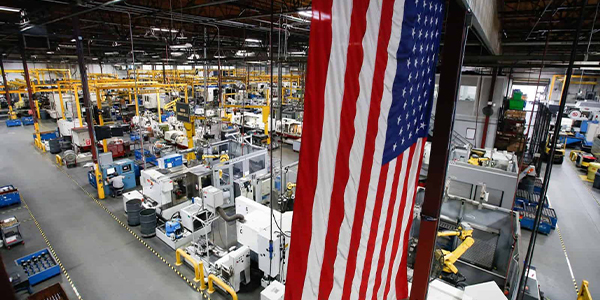Volume 10 | Issue 3

The health of the manufacturing economy is critical to the health of the U.S. economy. Fourteen million men and women work in the U.S. manufacturing sector, which accounts for 12 percent of the nation’s GDP. That’s about $1.5 trillion of wealth created in 2006, the most productive year for manufacturing in the history of this country. Yet America’s continued leadership in manufacturing is not a given, especially in a time of unprecedented global competition.
Our new report with AMR Research, “The Hidden Backbone of U.S. Manufacturing: Weakening Under Chemical Cost and Supply Pressures,” found that U.S. manufacturing is threatened by the rising cost and shrinking supply of the chemicals used as a vital raw material by most manufacturers.
Most alarming, one in four manufacturing companies say they will shift some production offshore if chemical cost and supply pressures persist. This could cause a ripple effect from large companies down to small companies, as plants close or are downsized and as local suppliers lose their large company customers.
The implications of these possible production shifts should be of concern to anyone interested in the future of our industry in America. The capability of the United States to manufacture essential goods domestically depends on a clustered economic and industrial infrastructure. These clusters are important to competitiveness. As Harvard Business School professor Michael Porter has said, “Nations succeed not in isolated industries but in clusters of industries connected through vertical and horizontal relationships.” A core component of this necessary infrastructure is the availability of supply from the chemical industry to downstream users.
Price, availability is key
The main factor affecting the decision among chemical suppliers to stay in the United States is the price and availability of natural gas as compared to other parts of the world. The question this survey raises is whether U.S. policy-makers are aware of how the mechanics of our 21st-century supply chain have raised the stakes for natural gas and energy policy as it impacts the chemical industry and, as a result, downstream manufacturers’ business decisions.
The study points out that domestic energy costs in the United States, especially natural gas, have risen dramatically compared to other major industrial economies, noting this may by why of the more than 80 new, large scale chemical plants on the drawing boards now around the world – each an investment of $1 billion or more with thousands of high-paying jobs – none is planned for the United States.
Simply put, energy policy drives the competitiveness of domestic chemical production, which is the most critical link of the manufacturing supply chain for chemical-using manufacturers such as the paper and pulp industry. Congress needs to do much more to ensure that America has affordable, internationally competitive energy supplies. We have vast reserves that Congress has put off-limits, and policy-makers should develop a plan to utilize more of them.
Policies impacting the vital chemical industry affect almost all of the manufacturing economy. This manufacturing supply chain is not evident to many Americans, yet it plays a central role in our high standard of living, and its health will determine how many high-paying manufacturing jobs stay in this country.
Action needed to hold down costs
High domestic natural gas costs are part of a much larger cost challenge facing manufacturers in America. Across-the-board, structural costs for U.S. manufacturers have increased from 22.4 percent to an astounding 31.7 percent since 2003 compared to nine major trading partners, according to another recent study by the National Association of Manufacturers, The Manufacturing Institute and the Manufacturers Alliance/MAPI. The study analyzed five external costs of production related to energy, pollution abatement, corporate tax rates, employee benefits (such as health care) and litigation.
Companies cannot pass on these cost increases to customers because of intense global competition from producers in countries that do not face these same structural costs. As a result, fewer new manufacturing jobs have been created and less is available to invest in research and development and worker training. These added structural costs are self-inflicted wounds by our government that must be addressed by our nation’s policymakers.
America needs a renewed commitment from its federal and state leaders to implement an aggressive new strategy for holding down costs so that our country retains a strong and healthy manufacturing base in the 21st century.
William Canis is Acting President of The Manufacturing Institute, the research, education and workforce arm of the National Association of Manufacturers, the nation’s largest industrial trade association. These two reports from The Manufacturing Institute’s “cost series” are available at www.nam.org/coststudies
In this episode, I sat down with Beejan Giga, Director | Partner and Caleb Emerson, Senior Results Manager at Carpedia International. We discussed the insights behind their recent Industry Today article, “Thinking Three Moves Ahead” and together we explored how manufacturers can plan more strategically, align with their suppliers, and build the operational discipline needed to support intentional, sustainable growth. It was a conversation packed with practical perspectives on navigating a fast-changing industry landscape.